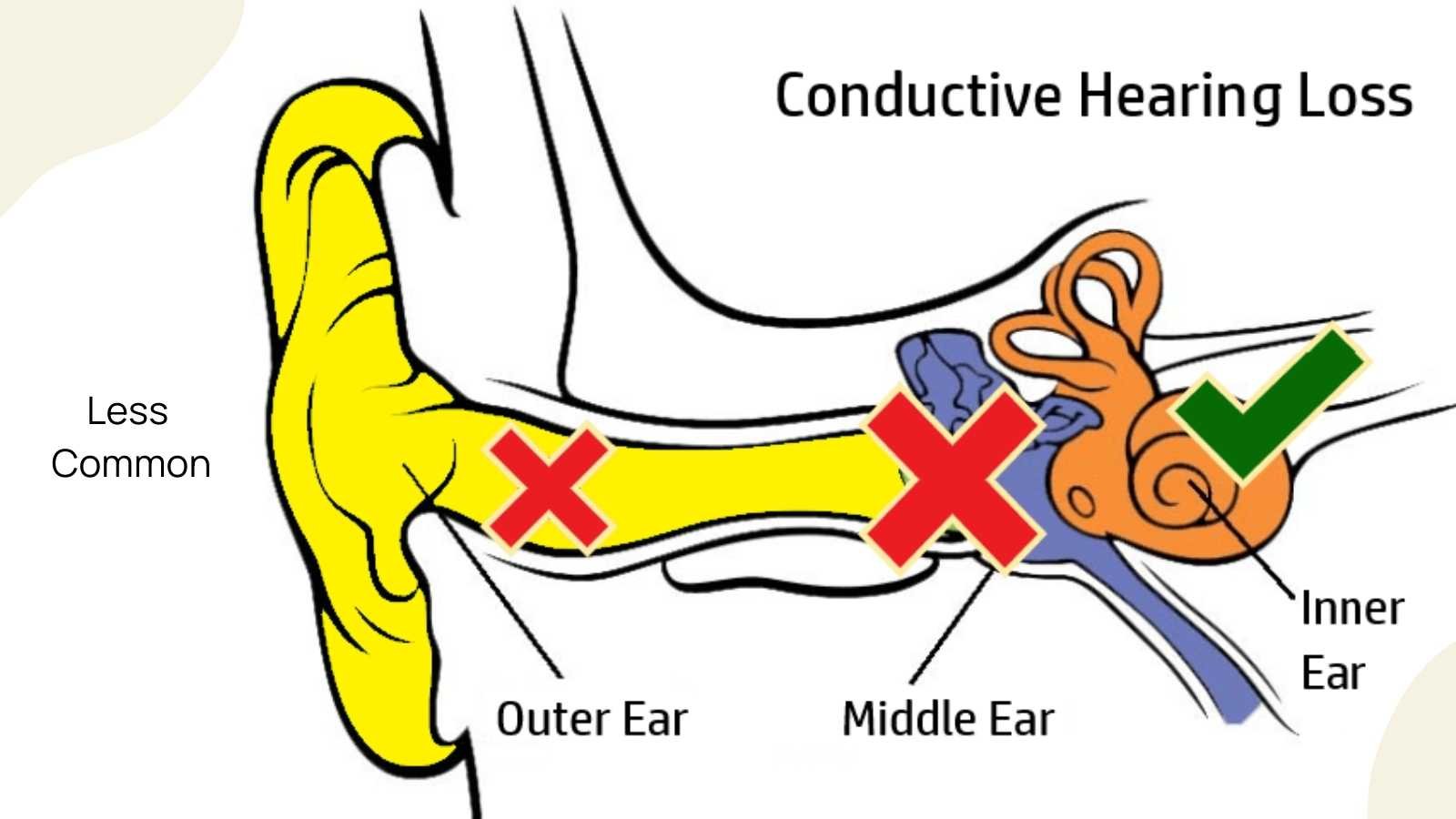Conduction Hearing Loss Ap Psychology E Ample
Conduction Hearing Loss Ap Psychology E Ample - Loss of hearing due to a disorder in the structures that transmit sound to the cochlea. Web causes & prevention. What is conductive hearing loss? Web hearing loss that results from a failure of the vibration of the eardrum or the resultant movement of the ossicles is called conductive hearing loss. The cause may be an injury. Conductive hearing loss occurs when sound conduction is impaired as a result of pathology in the outer or middle ear. About press copyright contact us creators advertise developers terms privacy policy & safety how youtube works test new features nfl sunday ticket Medically reviewed by john carew, md. This may be damage done to the eardrum or the middle ear bones (anvil, hammer, stirrup). Web conductive hearing loss refers to a decrease in auditory thresholds resulting from an interruption in the conduction of sound along the ear canal, ear drum, middle ear.
Web hearing loss that results from a failure of the vibration of the eardrum or the resultant movement of the ossicles is called conductive hearing loss. The outer ear includes the pinna, which is. Medically reviewed by john carew, md. Web hearing aids that simply send a stronger signal in the system can sometimes help. Web hearing loss caused by damage to the cochlea's receptor cells or to the auditory nerves; Web hearing loss that results from a failure of the vibration of the eardrum or the resultant movement of the ossicles is called conductive hearing loss. The most common form of hearing loss, also called nerve deafness.
Web your ear is made up of three parts— the outer, the middle, and the inner ear. The psychology of hearing loss brings together many different subdisciplines of psychology, including neurophysiology, perception, cognition, and mental health. A hearing aid is used for this less common form of hearing loss. Web hearing loss can induce observable psychological effects at various points in development. Web hearing loss that results from a failure of the vibration of the eardrum or the resultant movement of the ossicles is called conductive hearing loss.
List at least three causes of conduction deafness. Web hearing loss that results from a failure of the vibration of the eardrum or the resultant movement of the ossicles is called conductive hearing loss. Web your ear is made up of three parts— the outer, the middle, and the inner ear. This may be damage done to the eardrum or the middle ear bones (anvil, hammer, stirrup). Web hearing loss that results from a failure of the vibration of the eardrum or the resultant movement of the ossicles is called conductive hearing loss. Updated on september 19, 2023.
Web hearing loss that results from a failure of the vibration of the eardrum or the resultant movement of the ossicles is called conductive hearing loss. This may be damage done to the eardrum or the middle ear bones (anvil, hammer, stirrup). Web your ear is made up of three parts— the outer, the middle, and the inner ear. The most common form of hearing loss, also called nerve deafness. Updated on september 19, 2023.
A hearing aid is used for this less common form of hearing loss. Web hearing loss that results from a failure of the vibration of the eardrum or the resultant movement of the ossicles is called conductive hearing loss. Web conductive hearing loss involves structural damage to the ear such as failure in the vibration of the eardrum and/or movement of the ossicles. Web hearing loss caused by damage to the cochlea's receptor cells or to the auditory nerves;
Web Conductive Hearing Loss Refers To A Decrease In Auditory Thresholds Resulting From An Interruption In The Conduction Of Sound Along The Ear Canal, Ear Drum, Middle Ear.
Conduction hearing loss is caused by damage to the system that conducts sound waves to the cochlea. A hearing aid is used for this less common form of hearing loss. The outer ear includes the pinna, which is. Web conductive hearing loss involves structural damage to the ear such as failure in the vibration of the eardrum and/or movement of the ossicles.
Web Conductive Hearing Loss (Chl) Occurs When There Is A Problem Transferring Sound Waves Anywhere Along The Pathway Through The Outer Ear, Tympanic Membrane.
Loss of hearing due to a disorder in the structures that transmit sound to the cochlea. About press copyright contact us creators advertise developers terms privacy policy & safety how youtube works test new features nfl sunday ticket The potential psychological effects of hearing loss are different for. Web causes for conductive hearing loss include blockage of the ear canal, a hole in the tympanic membrane, problems with the ossicles, or fluid in the space.
This May Be Damage Done To The Eardrum Or The Middle Ear Bones (Anvil, Hammer, Stirrup).
What is conductive hearing loss? Medically reviewed by john carew, md. A conductive hearing loss happens when sounds cannot get through the outer and middle ear. Web hearing loss caused by damage to the cochlea's receptor cells or to the auditory nerves;
The Most Common Form Of Hearing Loss, Also Called Nerve Deafness.
Web hearing loss that results from a failure of the vibration of the eardrum or the resultant movement of the ossicles is called conductive hearing loss. Web hearing loss that results from a failure of the vibration of the eardrum or the resultant movement of the ossicles is called conductive hearing loss. Web hearing loss can induce observable psychological effects at various points in development. Web hearing loss that results from a failure of the vibration of the eardrum or the resultant movement of the ossicles is called conductive hearing loss.




![Conductive Hearing Loss The Complete Guide [2023]](https://i2.wp.com/cdn.hearusa.com/-/media/images/global/audiology/4x3/conductive-hearing-loss-4x3.jpg?rev=dd232ada97994def92e9f1870d405ee0&extension=webp)

